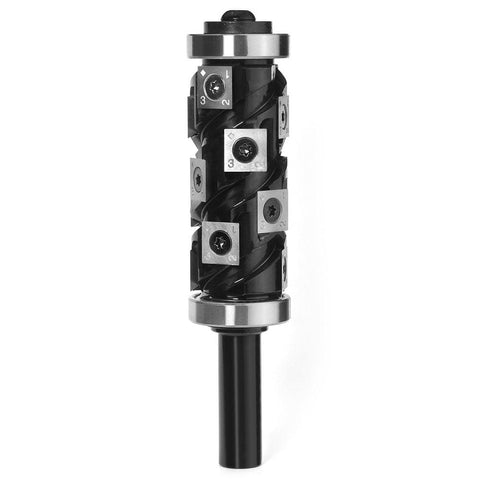What Are Compression Router Bits Used For?
In the world of woodworking, selecting the right tools is essential for achieving clean, precise cuts and ensuring the desired outcome of a project. One such tool that plays a crucial role in woodworking operations is the compression router bit. Compression bits, also known as combination bits, offer unique cutting capabilities that make them valuable assets in specific applications. In this article, we will explore what compression router bits are used for, uncovering their benefits and optimal scenarios for utilization.
Compression router bits feature a distinctive cutting design that combines elements of both upcut and downcut bits. These bits consist of an upcut section at the tip and a downcut section near the shank. This dual-fluted configuration allows for simultaneous chip evacuation both upwards and downwards during the cutting process. The result is clean, tear-out-free cuts on both the top and bottom surfaces of the workpiece.
One of the primary applications where compression router bits excel is when working with laminated materials or veneers. These delicate surfaces are prone to chipping or splintering during routing, which can compromise the final result. By utilizing a compression bit, woodworkers can achieve clean, smooth cuts on both the top and bottom surfaces, ensuring a flawless finish without compromising the integrity of the material.
Additionally, compression bits are highly effective when working with materials that have different densities or grain orientations, such as plywood or composite boards. The dual-fluted design allows for efficient chip removal, preventing chip buildup and minimizing the risk of tear-out or surface damage. This makes compression bits an excellent choice for applications such as edge banding, where a clean, uniform cut is crucial for achieving seamless joints.
When it comes to joinery, compression router bits can also be a valuable tool. For example, when creating mortises, where the goal is to achieve precise and structurally sound joints, a compression bit can provide excellent results. The cutting geometry of the bit ensures a clean, tear-out-free mortise on both the entry and exit sides, resulting in tight-fitting joints that require minimal post-routing clean-up.
Another scenario where compression router bits shine is when cutting slots or grooves in solid wood or other materials. The simultaneous upward and downward chip evacuation ensures efficient waste removal, reducing the likelihood of clogging and resulting in a cleaner, more precise cut. This is particularly advantageous when working with materials that tend to splinter or chip, as the compression bit helps to minimize tear-out and produce a smooth, professional-looking groove.
It's important to note that while compression router bits offer numerous advantages, they may not be suitable for every woodworking application. For instance, when working with materials that do not require clean cuts on both surfaces, such as roughing or hogging tasks, other bit types may be more appropriate. Additionally, compression bits are typically used in high-speed routers or spindle machines due to their design and cutting characteristics.
In conclusion, compression router bits are versatile tools that find their utility in various woodworking tasks. From working with laminated materials to cutting slots and grooves, these bits excel in scenarios where clean, tear-out-free cuts on both surfaces are desired. By understanding the benefits and optimal applications of compression bits, woodworkers can select the right tool for the job, resulting in precise, professional-looking cuts and joinery.



